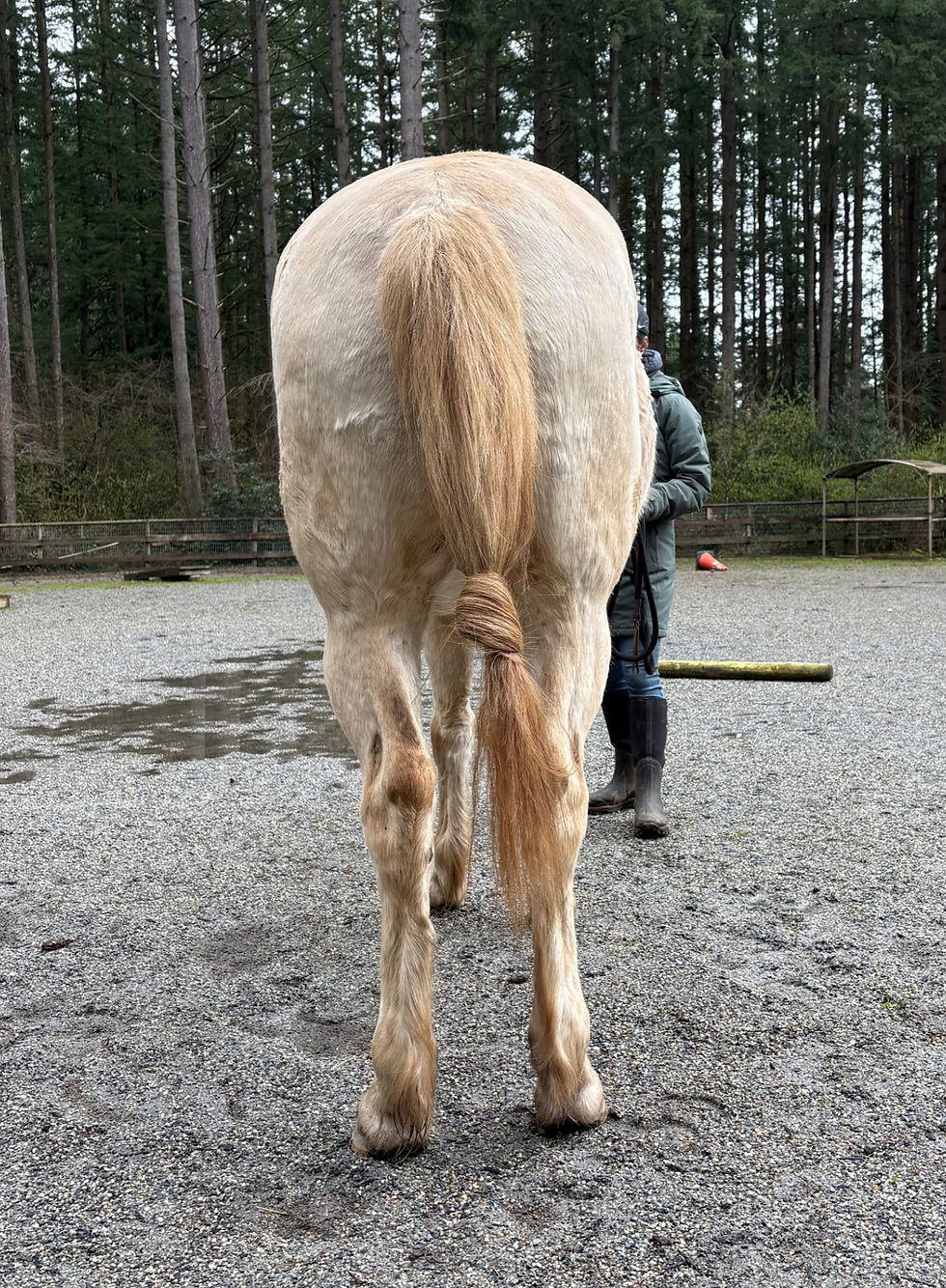Don't Forget The Nervous System!
- Elisse Miki

- Dec 1, 2021
- 4 min read
Updated: May 26
Often times, therapists will give an amazing treatment to a horse and we will see huge improvements right away but they are short lived or appear to be unsustainable.
Why Do You Think This Happens?
One of the reasons is that the body may not have integrated these tissue changes back into the nervous system. Following injury or a traumatic event, the nervous system tends to rewire new pathways in the short term in order to provide protection to damaged tissues. These new pathways create compensated movement patterns so that the horse can still tend to daily activity needs such as accessing food and water. Of course in more severe injuries, the horse may be completely incapable of locomotion for a period of time. This blog is addressing the latter group of more common soft tissue injuries such a low grade lameness.
A Human Example
You sprain your ankle, which hurts, so you are not able to load the foot as you normally would. What happens next (if you must get around throughout your day) is that your body will develop a new altered movement pattern where you almost subconsciously limit load to the affected tissues. This usually looks like walking on the side of the foot that doesn’t hurt or putting more weight into the heel or toe, all of which also alters the mechanics of the joints above (hip and knee). But what happens once the sprain has healed? Now you have a new motor control pattern and adaptive shortening of the affected tissues. In some cases, your body will sort this out on it's own but frequently and especially with more serious injuries this pathway becomes solidified as the “new normal”.
Why Is This Important For Our Horses Too?
Because horses are animals that rely heavily on the ability to move in order to live. They must be able to get to the hay and water and, most importantly, they must be able to move away from predatorial threats. When a horse is injured, their self preserving nature dictates that they will inherently develop an altered motor control pattern in order to 'get by' in their daily life.
Therefore, combining movement with manual therapy is of utmost importance in order to provide the nervous system the opportunity to immediately integrate new ranges of motion into motor control pathways. Additionally, movement stimulates the circulation of blood and production of joint fluids which in turn allows the manual therapy techniques to go further in terms of effectiveness.
Allowing the nervous system to integrate tissue length changes immediately combined with stimulation of proper supporting muscles results in improved movement patterning. If you have ever been for a manual therapy treatment and felt great right after but notice these improvements only lasted a few days. This is a big part of the reason why. Increasing tissue extensibility without teaching and allowing the body to integrate these changes directly into movement results in habituation back to old motor patterns. The nervous system does this as a self-protection mechanism unless we can stimulate neural pathways to register the change. The key here is that movement must be pain-free in order for integration to be maintained.
Motor Control and Therapy Demonstration
A short video demonstrating some of the mobility and motor control work that I do within therapy sessions with my horses.
My pony Waco has substantial scar tissue and reduced joint range of motion from previous injury, so these exercises are working to support his nervous system through the rehab process and keep his body mobile in the meantime. This video shows one round of some of the movement and therapy, however, his full session consists of 2-3 rounds of what is covered here and various other manual techniques.
Want To Learn More?
Check out some of the research on this topic!
A study conducted by Farquhar et.all (2008) showed that movement patterns are altered following injury and that they may not resolve with standard rehab. This study looked at knee ACL injuries in humans. They analyzed motion data at the time of injury as well as one-year post rehabilitation once all patients were reportedly pain free and functionally able bodied.
At the time of injury, the patients demonstrated a quadriceps muscle avoidance strategy when performing a sit-stand test. This means they were using other muscles to complete the act of getting up out of the chair unknowingly. Note: this is a prime example of altered motor control following injury.
One year post rehab, the motion analysis data showed that they still relied on altered hip and ankle strategies when performing a simple sit-to-stand. This tells us that the quadriceps avoidance strategy persisted even though quadriceps strength had resolved and patients were asymptomatic for pain.
The take home message here is that altered motor control for you or your horse can lead to a repetitive cycle of imbalance and strain.
Ready to Learn More?
Explore our Free Resources for tools you can use right away, dive into our Online Courses to deepen your knowledge, or join one of our Certification Programs to take your equine therapy practice to the next level.
Reference
Farquhar, S.J., Reisman, D.S., & Schneider, L. (2008). Persistence of Altered Movement Patterns During a Sit-to-Stand Task 1 Year Following Unilateral Total Knee Arthroplasty. Phys Ther.






Comments